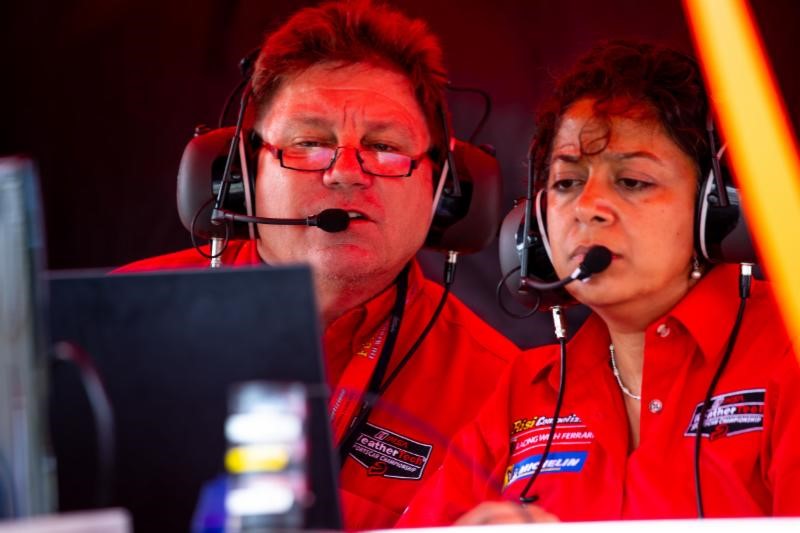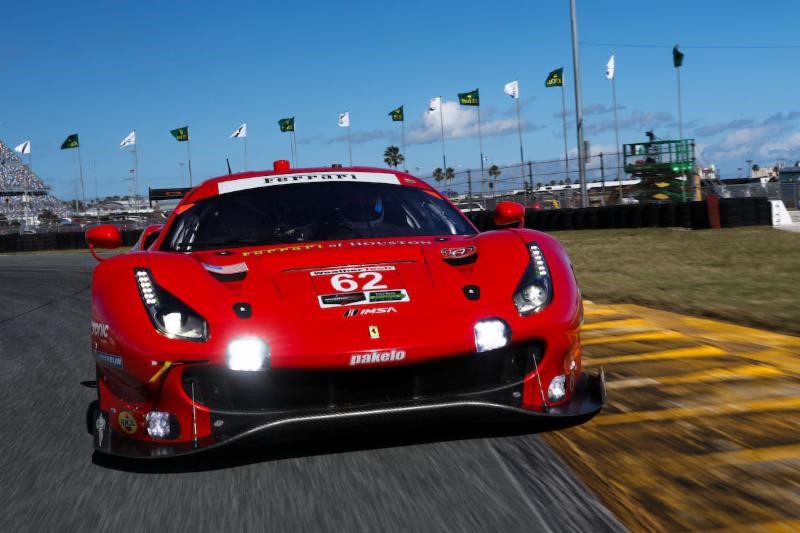Risi Competizione enters 1 Ferrari for Rolex 24
 |
| #62 Ferrari GTLM |
Risi Competizione will enter the 2019 IMSA WeatherTech SportsCar Championship season with a single GT Le Mans (GTLM) entry for the upcoming Rolex 24 At Daytona, January 26-27, 2019.
The Daytona entry consist of the No. 62 Ferrari 488 GTLM with Ferrari Competizione GT drivers to be announced. Two of the four drivers will be on hand at the Roar Before the 24 Test Days, January 4-6.
Rick Mayer, race engineer of the Risi Competizione Ferrari entry, gives a preview of the upcoming Roar test.
General: The total car count (47 cars) is similar to last year, unsure how LMP2, as a Pro-Am class, will affect the actual race event; fewer safety cars in 2018 could have been contributed to no Pro-Am Prototype class, but that's speculation. 2019 will have 11 Dpi's, 24 GTDs, four LMP2's, the four two-car factory GTLM teams and the single Risi Ferrari. Last year had 20 GTD's and no Pro-Am prototype class. The four longer endurance races always have a larger Pro-Am content than the shorter races as there's more drivers listed for each car. Getting through traffic can be tricky, not every driver has the same skill level or patience. Damaged cars rarely win; driver concentration has to be high, traffic will be constant, and spotters at Daytona are extremely important, even for the Roar. Clearing traffic will be particularly difficult for GTLM as the GTDs have equal or better banking speeds and the GTDs are allowed ABS brakes. The entire field being on Michelin's this year could tighten the lap time differences between GTLM and GTD, making the classes even closer in performance.
 |
| Risi Competizione race engineer, Rick Mayer |
Competitiveness: The IMSA WeatherTech specific balance of performance (BoP) GTLM rules evolved from last year's race as IMSA's moved to a specific Daytona BoP. The GTLM Ferrari gained weight from last year's event, which will again make it difficult to race the four factory backed GTLM teams competitively. Based only on the BoP you'd have to still give the advantage to Ford, even though IMSA reduced their power and increased their weight. They dominated last year's race with no competition at race pace. But Porsche has been recently dominant, with BMW and Corvette not far behind, and hopefully a Ferrari in the mix as well.
All GTLMs are using completely different Michelin tires for the 2019 IMSA season. These tires are what each manufacturer chose for 2018 WEC. Each manufacturer developed specific unique soft and medium compound tires. Each GTLM manufacturer has run their tire options but none have raced them in the USA. This could add a slight variable or unknown to the relative competitiveness between each manufacturer; temperature (track conditions) could play a larger role in the outcome as each compound has an ideal temperature window and acts differently on each car. Adding to this, the weather for the Roar will be quite cool, where the race has sometimes been significantly warmer.
The Track: Daytona is the iconic, classic 'Roval' and the only one we run in IMSA competition. Track grip varies with the weather conditions. Any rain will add additional complexity, and there is a chance of rain forecasted for Friday. The track surface is still relatively smooth; the infield was repaved a few years back. The corners are all slow except the 'Bus Stop' and the 'Kink'. This is all complicated by having to run very high tire pressures and very low cambers in order to diminish the chance of having banking related tire failures. There are many ways to get a good lap time at Daytona but competitive banking speeds, good stable braking, good corner exits from Turn 3, 6 and the 'Bus Stop', plus speed through the latter, are key to a competitive race car.
Setup: Daytona is a track that requires some reserve in setup to increase tire longevity. Unlike other tracks Daytona setups only relate to Daytona. The mechanical setup and tire pressures we need to run (Daytona only pressures and cambers) are all in the direction of safety at the detriment to lap time and performance. We bias the setup to improve braking stability and traction and maximize banking speed. You don't specifically setup for the infield, as it is difficult to pass there. The required high tire pressures (+10%) reduce both front and rear grip. The increased pressures tend to bias the deficit to the rear both at corner entrance and power down at the exit. The reduced camber safety requirements (more than one degree less negative camber) also decrease grip; all of this changes the general setup. We'll try and trim drag, to improve banking speed, to a limit, as IMSA rules stipulate a minimum wing angle for each GTLM, but you lose braking and 'Bus Stop' performance with reduced downforce, trimming aero is always a compromise and you need to consider forecast weather conditions.
There's more than enough scheduled track time at the Roar to work through a proper test program. We have four of the best Ferrari Competizione GT factory drivers for the race and we're bringing two drivers to the Roar. Let's just hope we have a productive test and can come back race week competitive and ready to fight for 24 hours!
